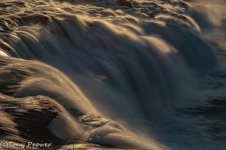Sorry I'm going to have lots of questions!
Just went out today with my camera. Totally newbie, spent some time watching videos and reading up. Decided to go out today and just see what I could take photos of and get used to the controls of my d5600.
I thought I would stick to manual to get an understanding of apatite, shutter, iso etc...
Now I wanted to try and get a photo of some moving water and thought I would try a long shutter speed. My understanding was I should go for a high F stop, low iso and then try and get the shutter to stay open longer. I went for F25, iso of 100 but the longest I could get the shutter was 1/3? Anything longer and the image was way over exposed?
It was quite a dull day but obviously I'm doing something wrong. Did think do I need an ND filter when doing this or am I missing something simple.
Just went out today with my camera. Totally newbie, spent some time watching videos and reading up. Decided to go out today and just see what I could take photos of and get used to the controls of my d5600.
I thought I would stick to manual to get an understanding of apatite, shutter, iso etc...
Now I wanted to try and get a photo of some moving water and thought I would try a long shutter speed. My understanding was I should go for a high F stop, low iso and then try and get the shutter to stay open longer. I went for F25, iso of 100 but the longest I could get the shutter was 1/3? Anything longer and the image was way over exposed?
It was quite a dull day but obviously I'm doing something wrong. Did think do I need an ND filter when doing this or am I missing something simple.

